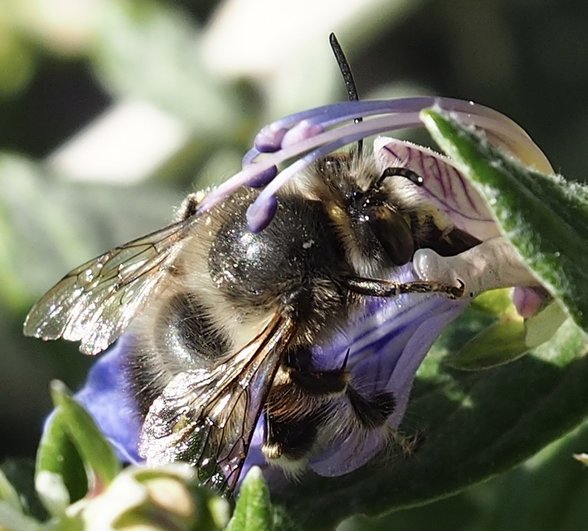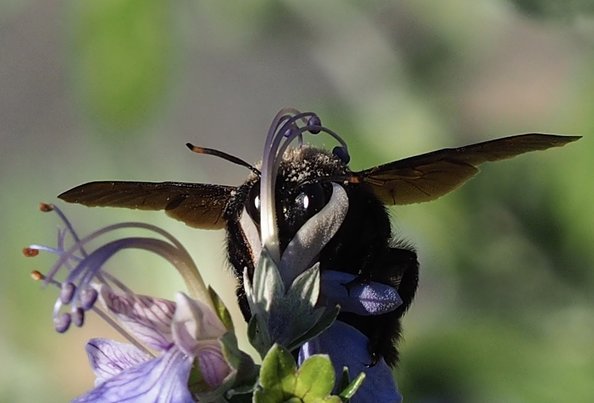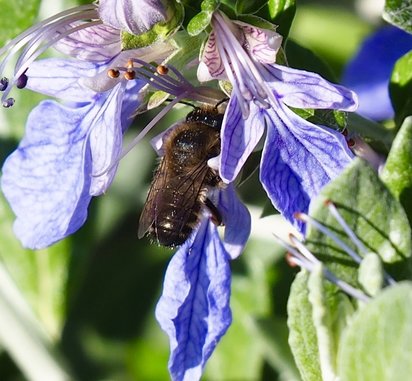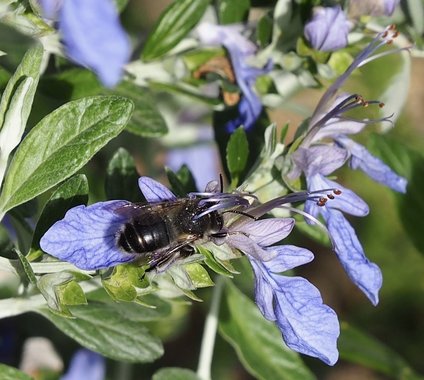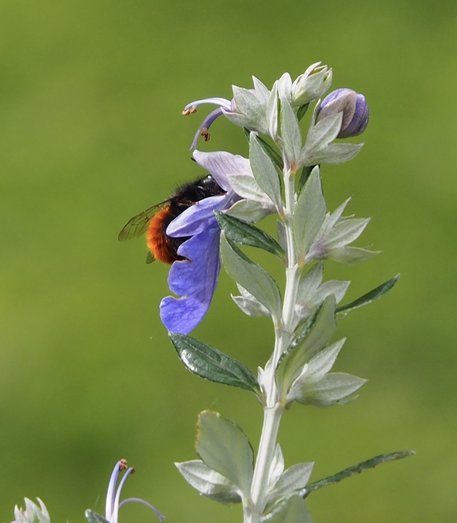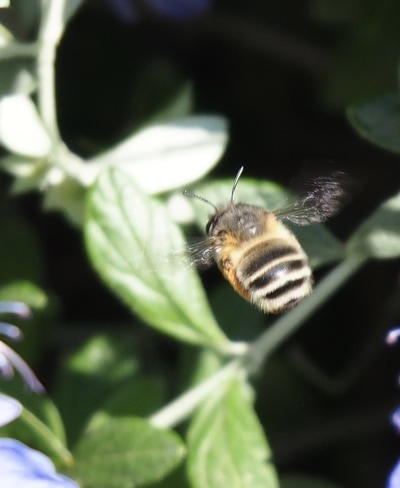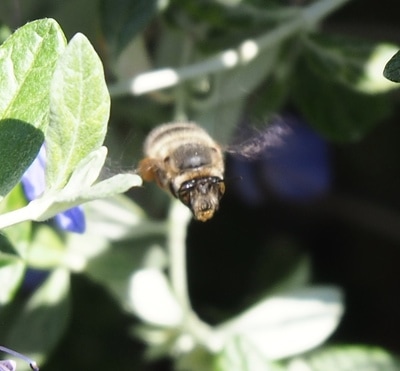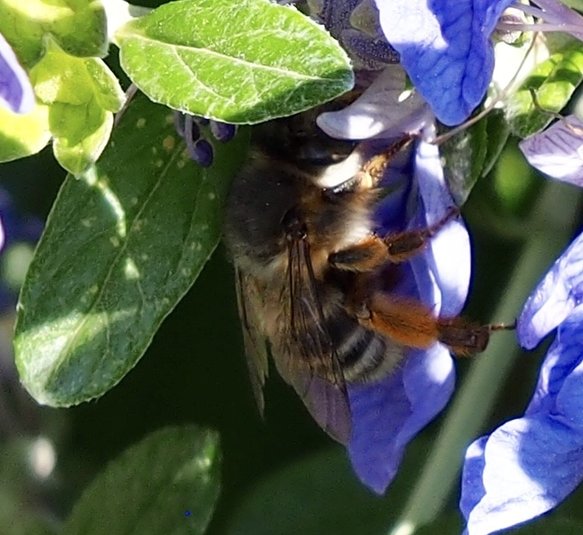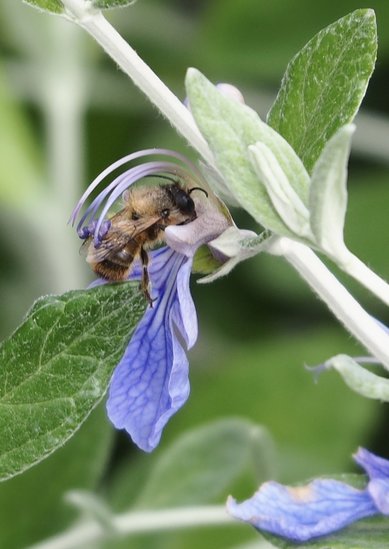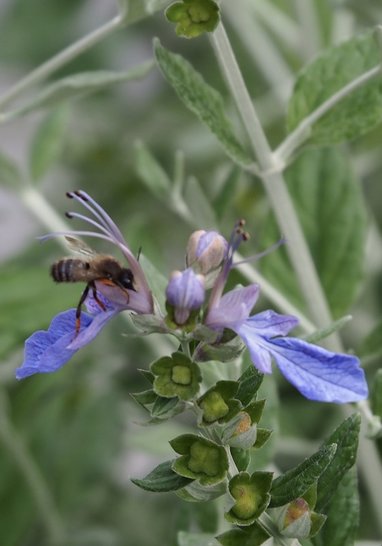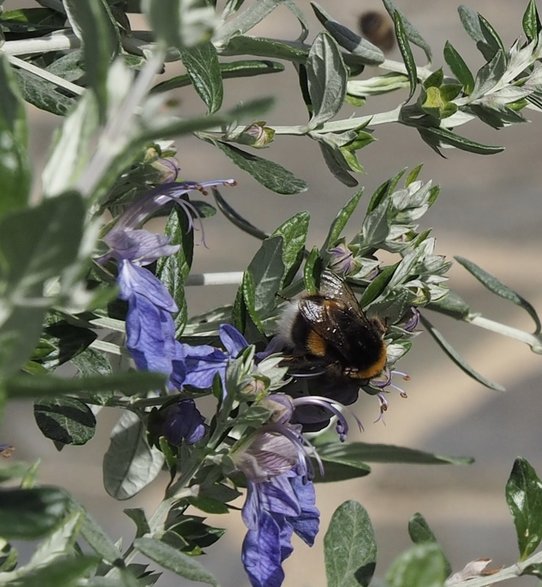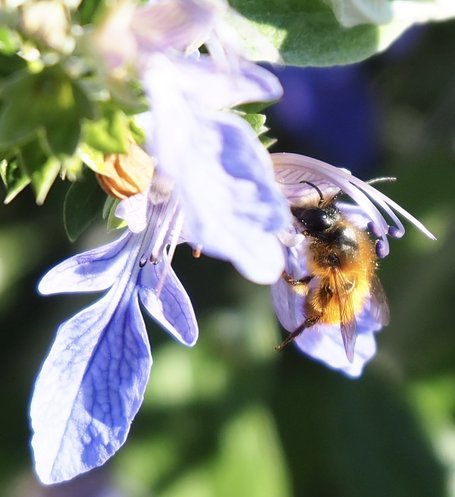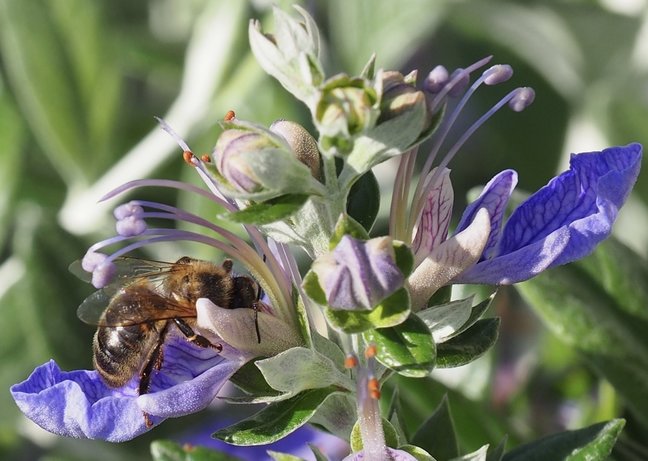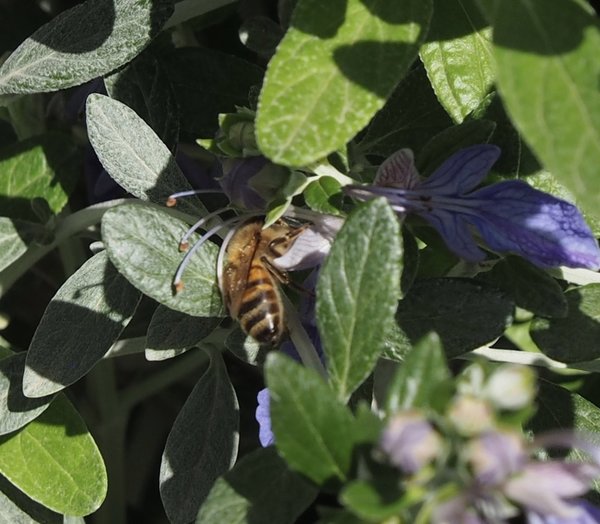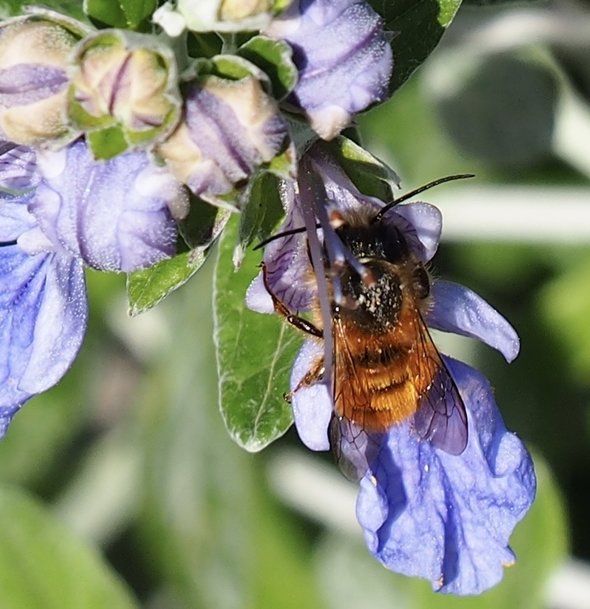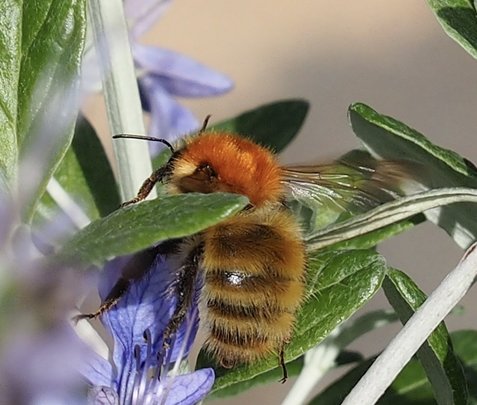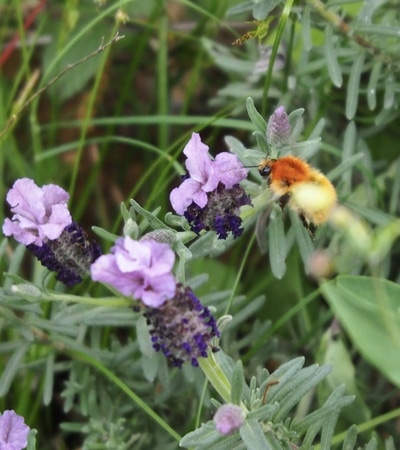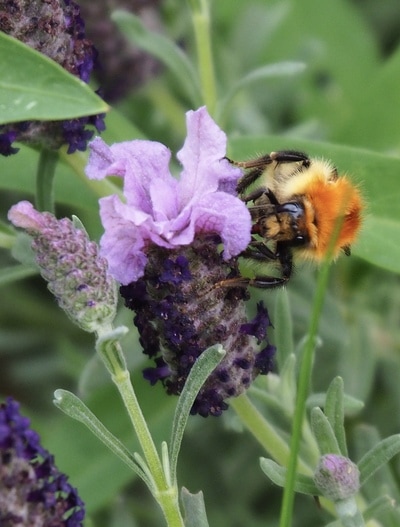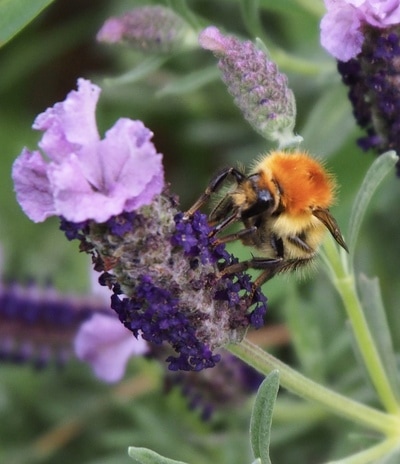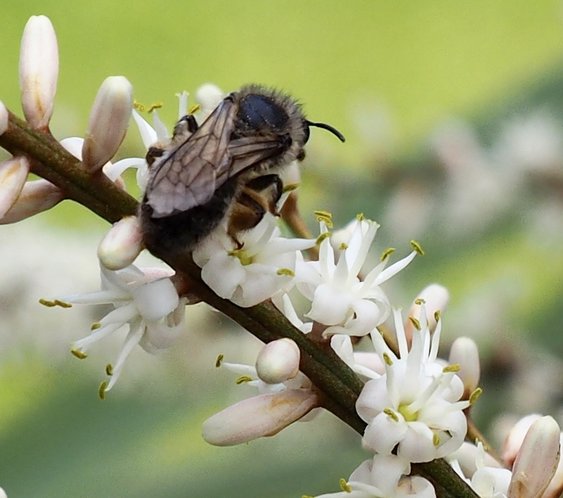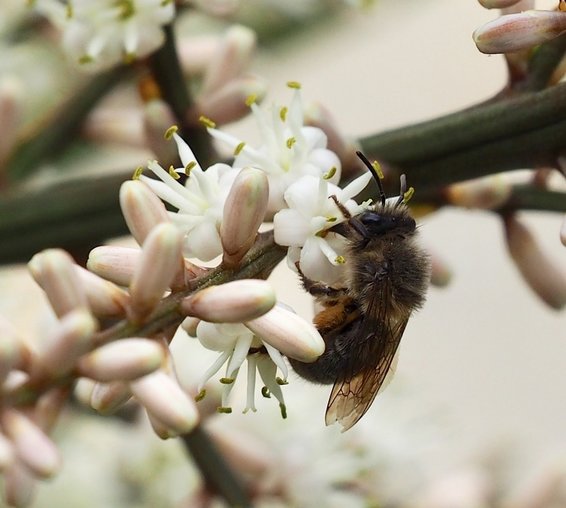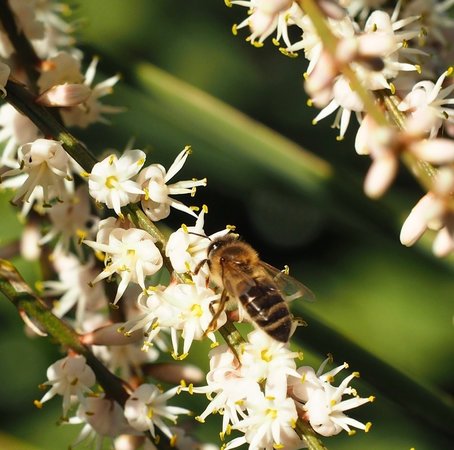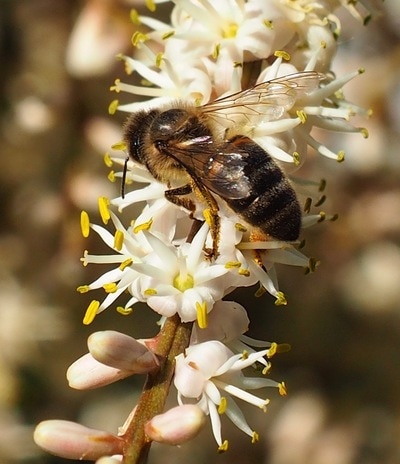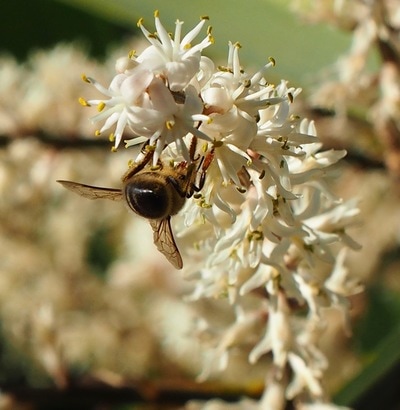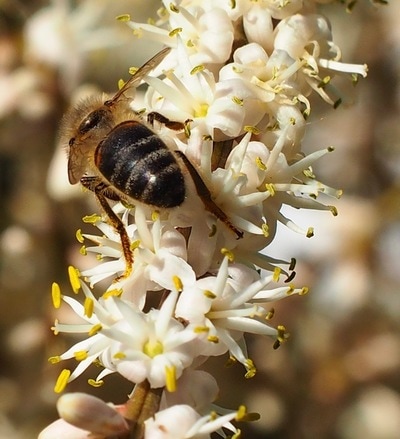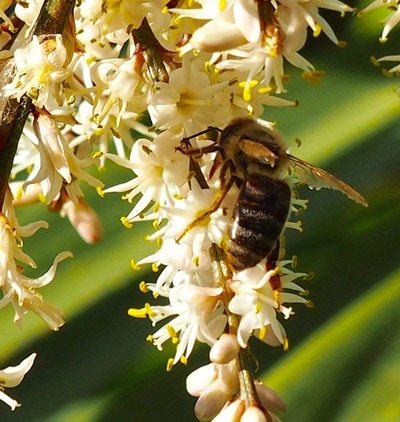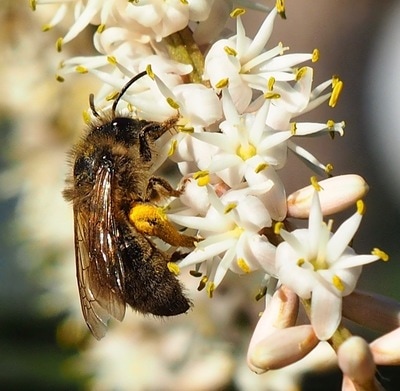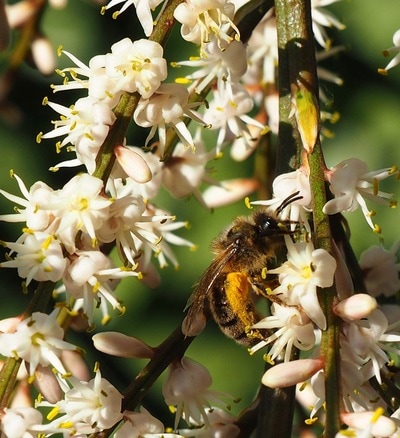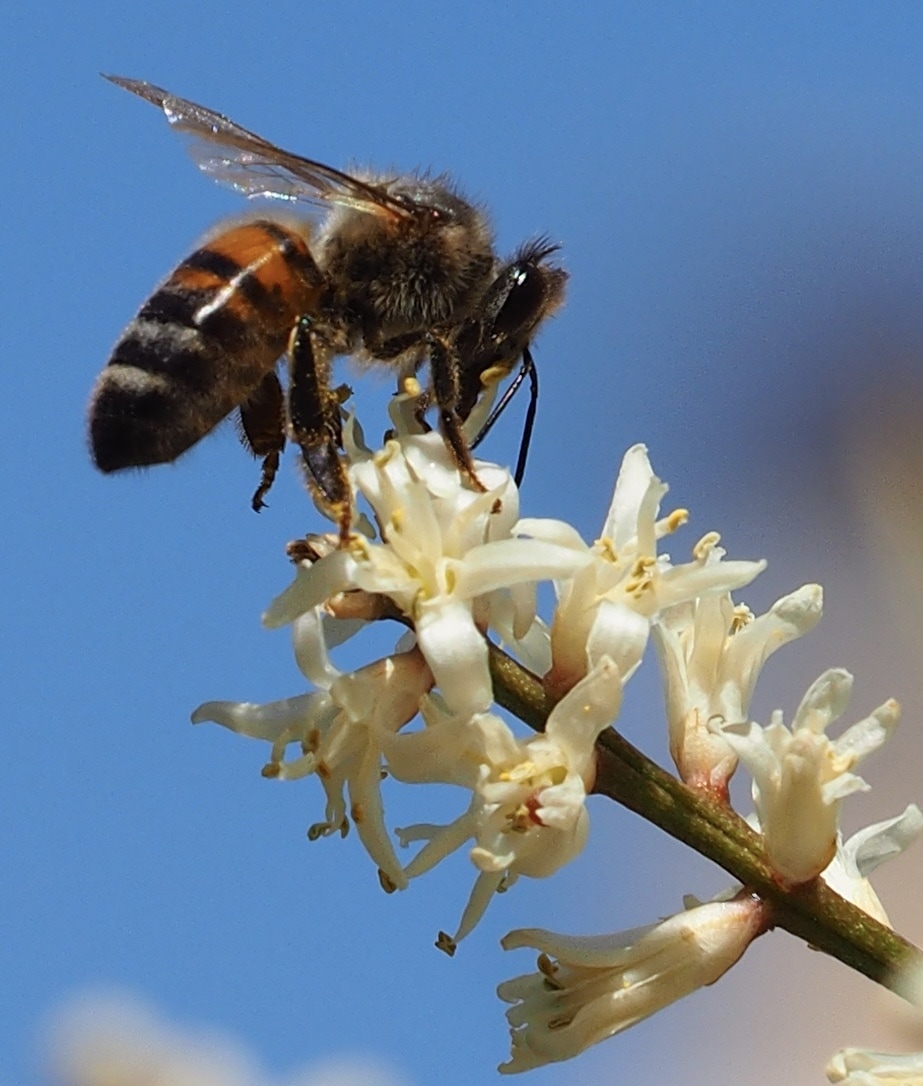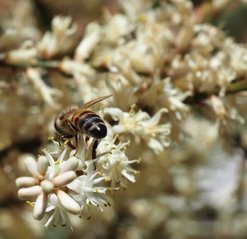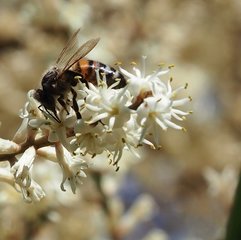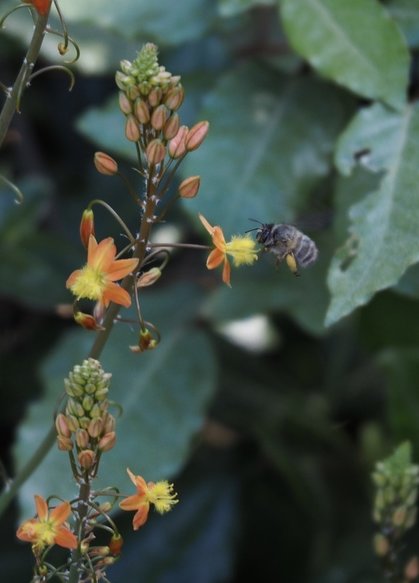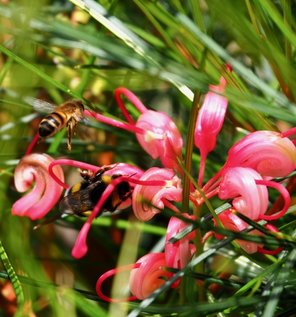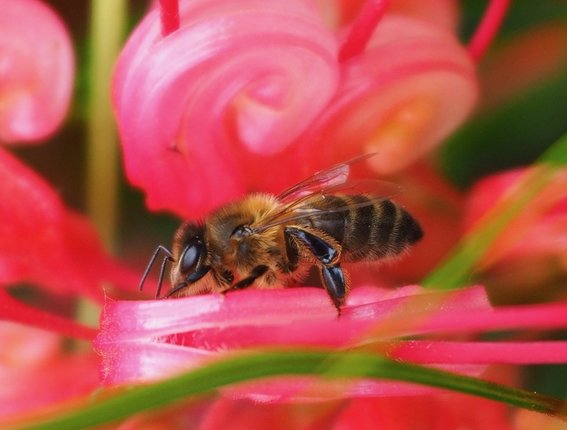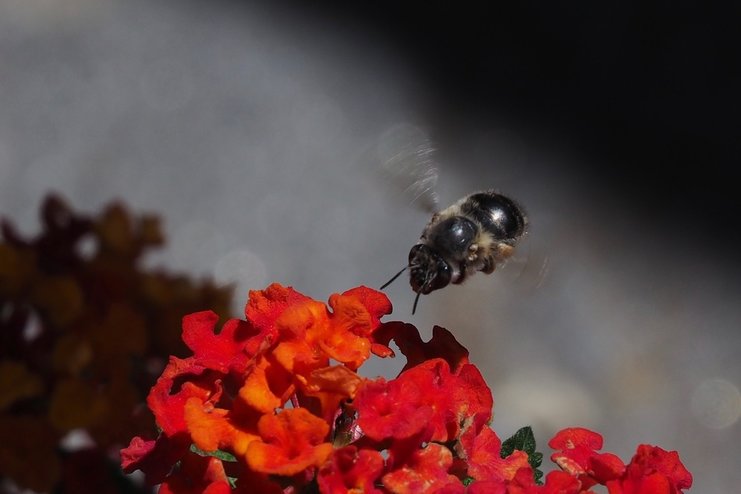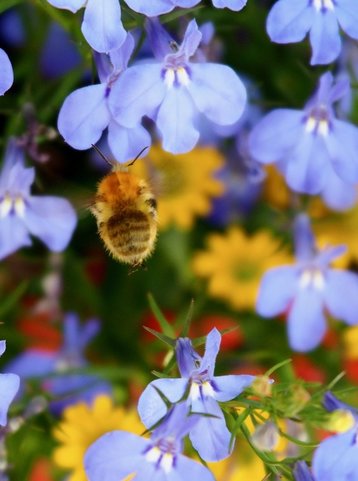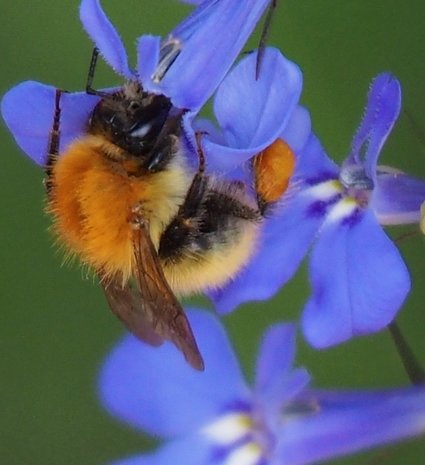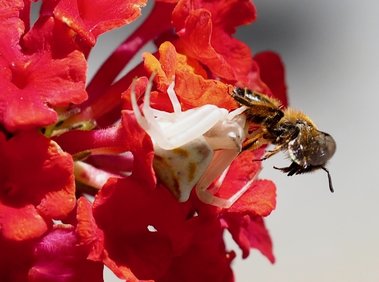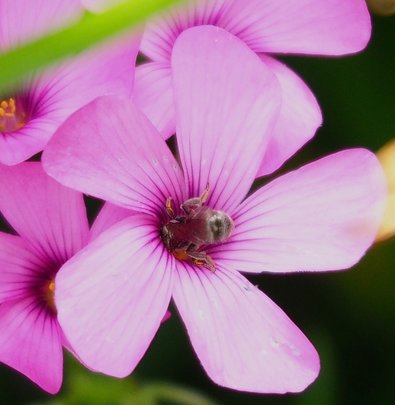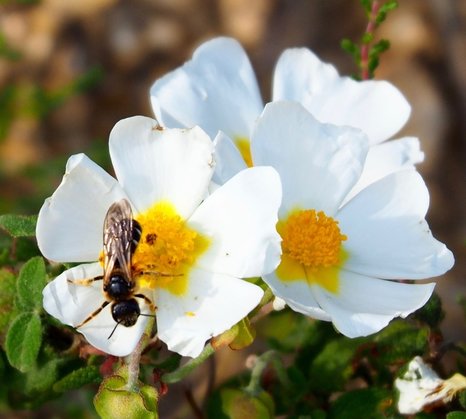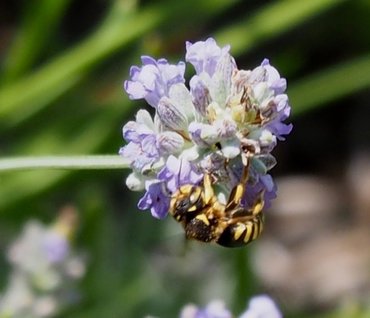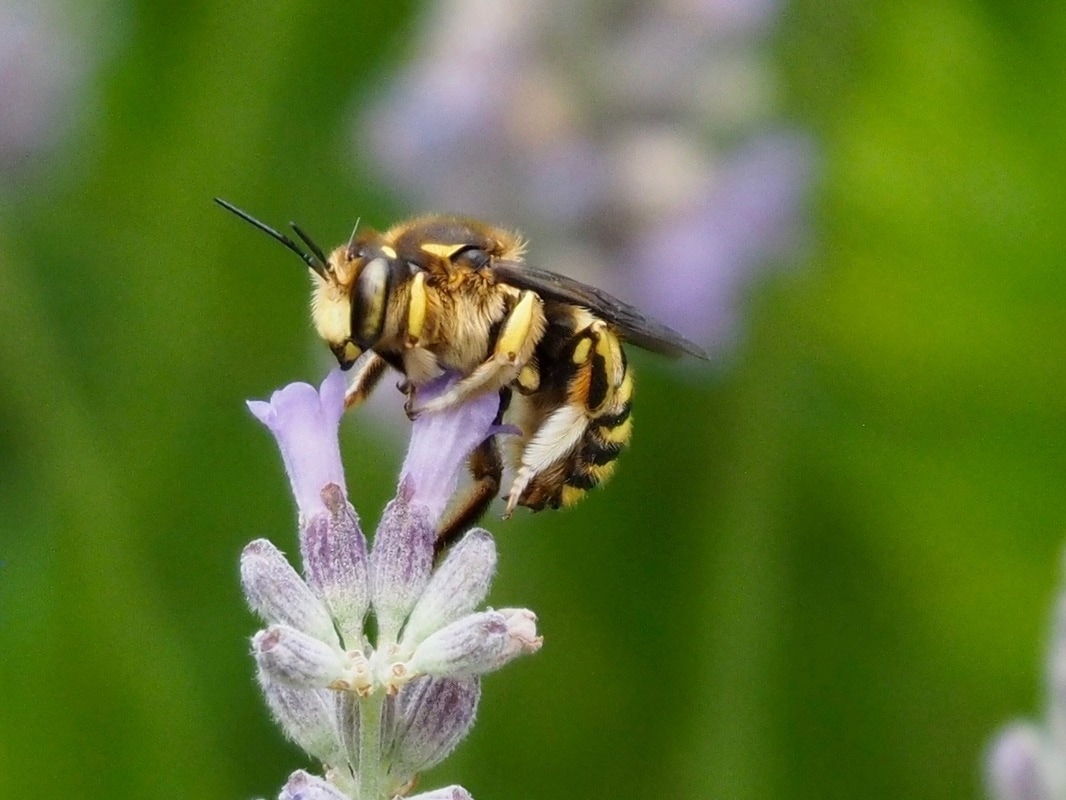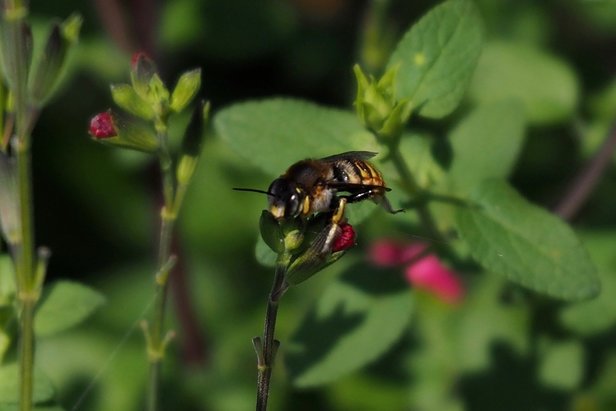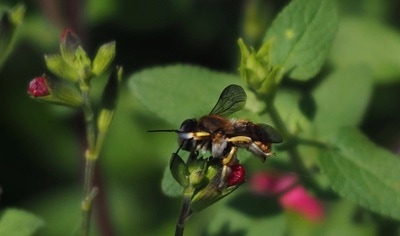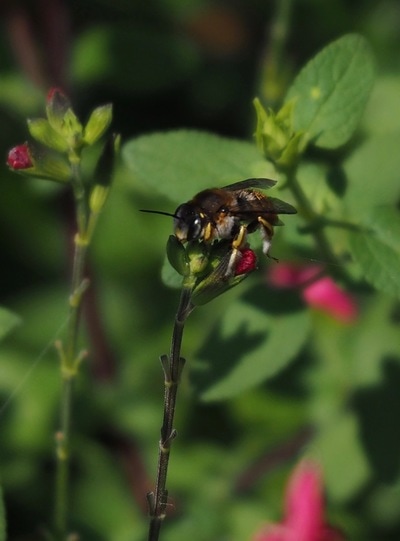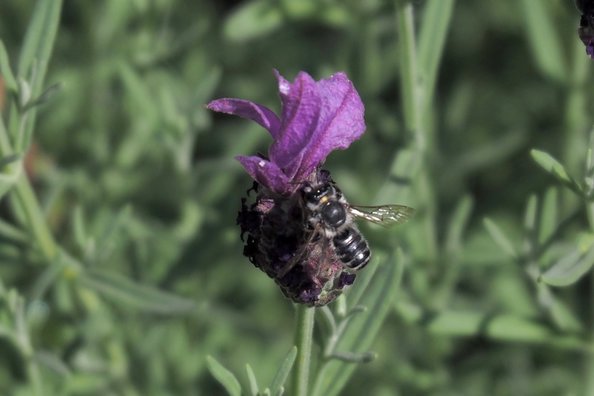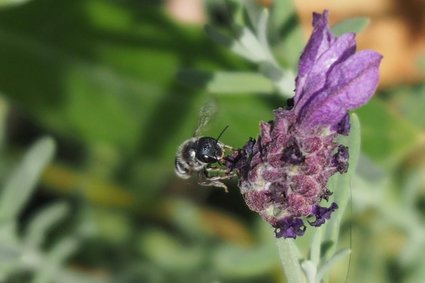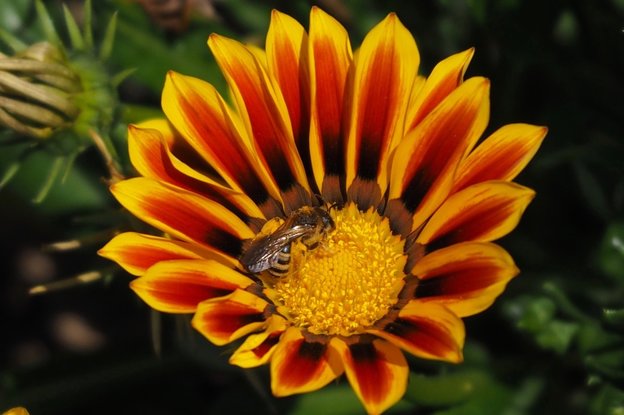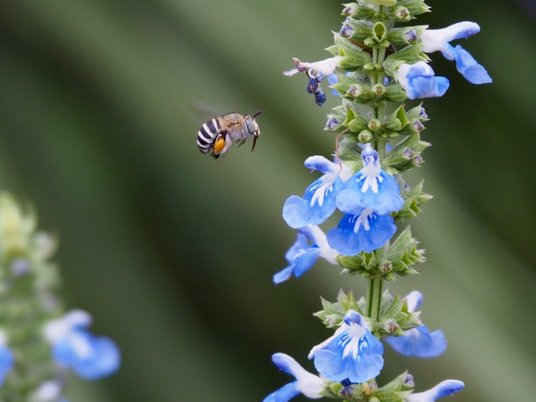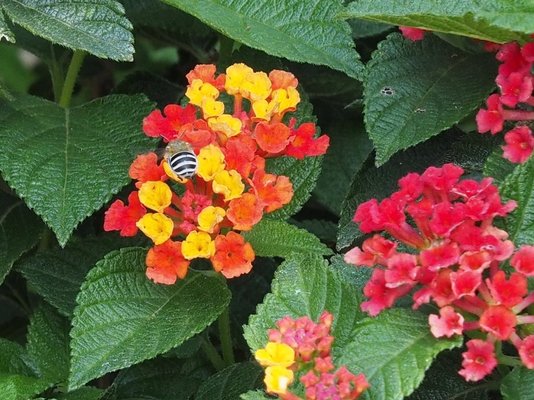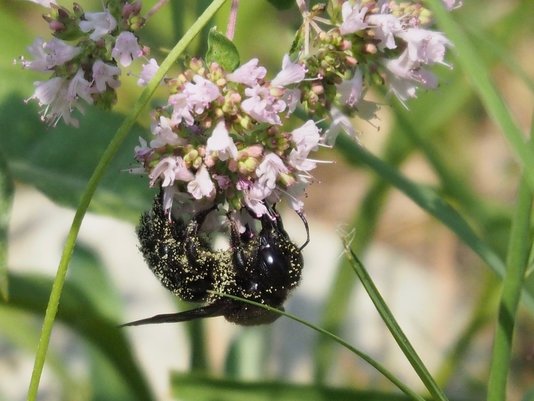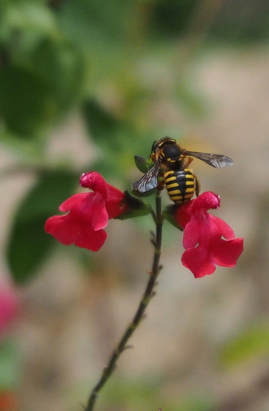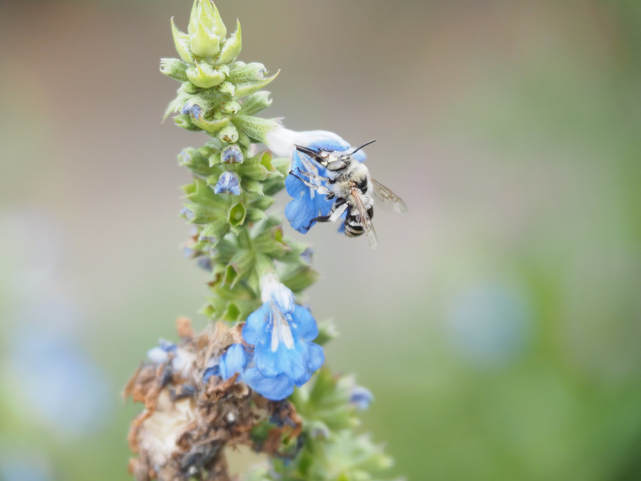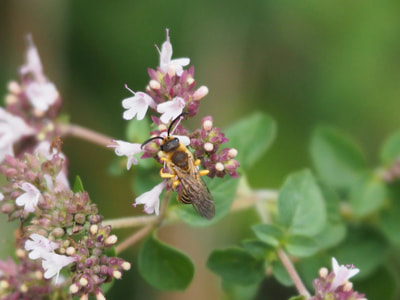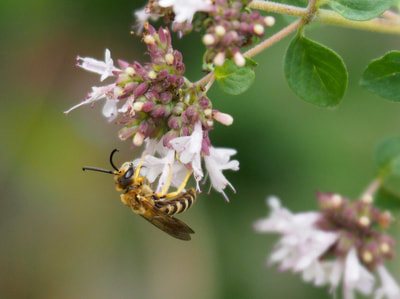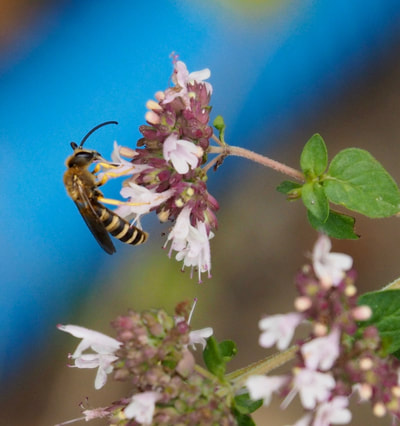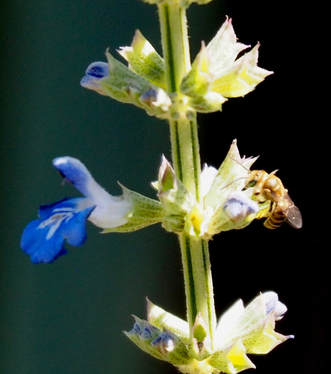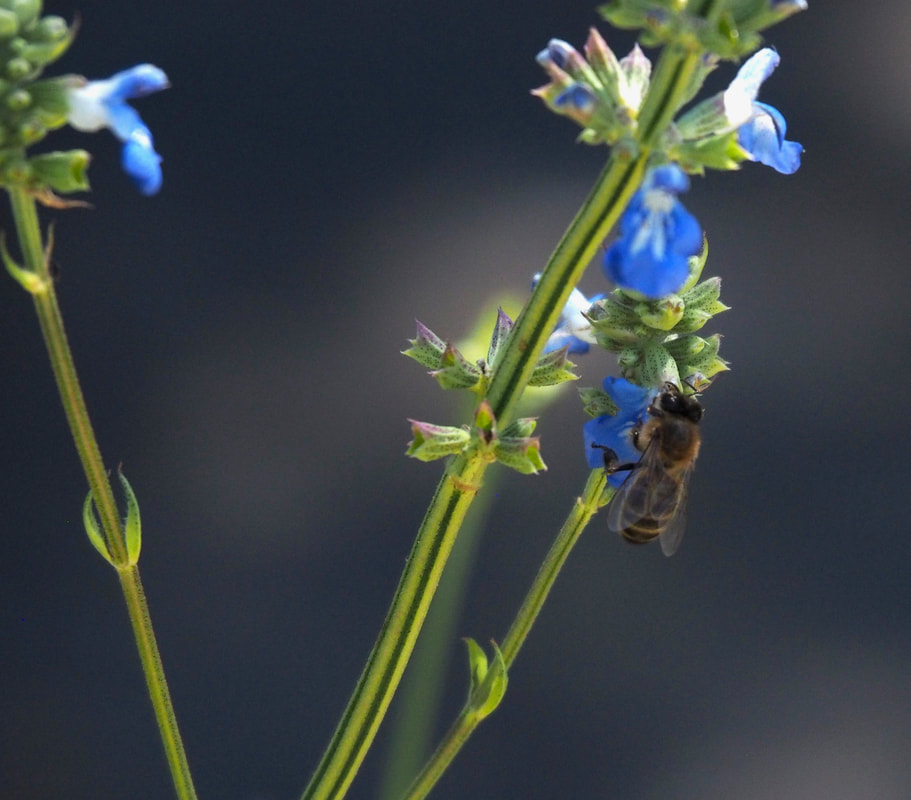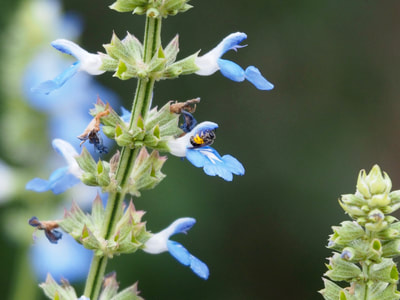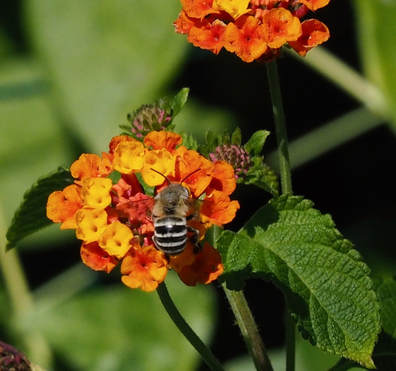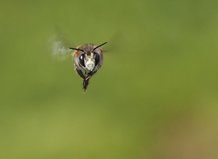
FOR THE LOVE OF BEES
My challenge for 2017
is to record the many different species
that visit my garden.
(Identifying them may be a challenge for another year!)
My challenge for 2017
is to record the many different species
that visit my garden.
(Identifying them may be a challenge for another year!)
MARCH
APRIL
Most of the bumblebees seem to have disappeared from our garden by mid April. Whether this is simply because the popular blue-flowered plant has "gone over", or for another reason, I don't know. Now our Australian cordyline is flowering and attracting a lot of bees - most of which appear to be honey bees (rose chafers also adore it!). The second one (below right) appears to be a bumble, but the closer you zoom in, even to honey bees, the hairier they appear - especially on the thorax and when dusted with pollen.
I'm fairly sure that the next group of seven are all the same species of honey bee.
Similar to (but not exactly the same as?) the second stripey individual on the blue flowers in March, above.
Similar to (but not exactly the same as?) the second stripey individual on the blue flowers in March, above.
Amazing to see how well they keep flying despite, in some cases, having very tatty wings (below left).
The productive worker in the other two photos has an admirable load of pollen on its back legs.
The productive worker in the other two photos has an admirable load of pollen on its back legs.
The one in the next three shots looks more like the one on the blue flowers in March, above, with three distinct bands of orange-yellow
MAY
This month another Australian plant - a broom - is the main attraction for honey bees. Lobelia is popular, and lantana too, but danger lurks there. By now I'm not seeing any new species - but finally manage to photograph a tiny one that loves the equally small pink flowers of what I think is a type of wild clover.
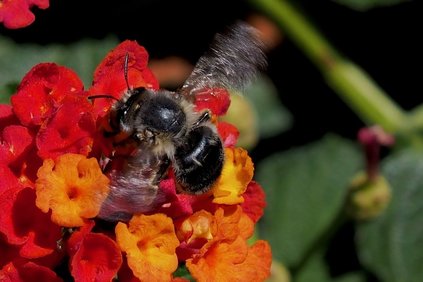
I'm going to hazard a guess that this is a female Anthophora plumipes. According to my book, females are jet black except for orange pollen brushes on their back legs. Her left back leg is slightly hidden by her wing, but there is a hint of a paler colour (but not orange?) in the lower segment, I think.
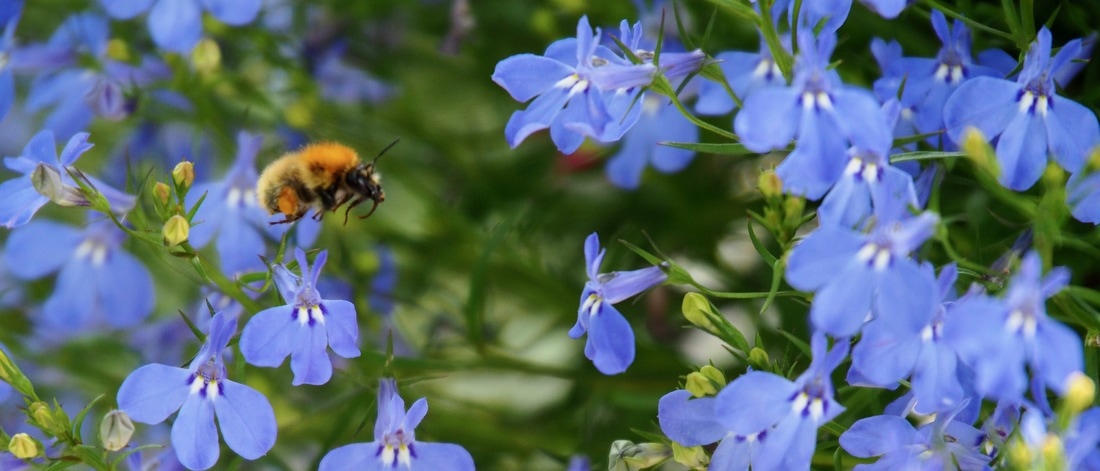
A favourite from March returns to enjoy the lobelia in a hanging basket - he already has quite a load of pollen! And he might, in fact, be the male Anthophora plumipes. Such a contrast from the female (possibly in the photo above). Males of this species apparently have prominent fans of hairs on middle legs. And the eye "reaches down to meet the jaw, with no cheek area such as occurs in bumble bees."
JUNE
As the temperature rises, lavender, cistus and gazania bring at least one species I haven't seen before.
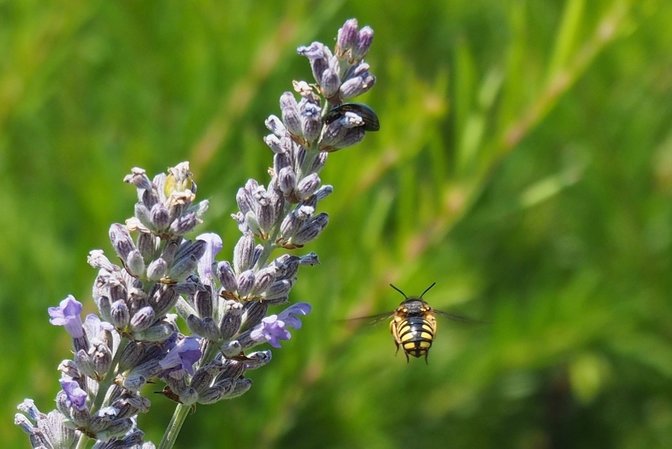
Fairly sure this is a female Anthidium florentinum. It's small - for comparison, note ladybird near top of lavender spike. According to my book, this species is "distinguished from most of its relatives by yellow or brick-red borders to thorax." (see photo below left). Intriguing to read that its nest is lined with hairs plucked from plants. Males are much bigger than females.
The bee in the next three photos looks similar to the one above, but possibly without the yellow borders to its thorax? Hard to tell from the angle, but its legs look much the same.
JULY
A final few blue flowers are still opening on the salvia but that plant, along with many others, will soon go dormant until the autumn or next spring. By mid July, as temperatures regularly reach the 40s in the sun, there's a significant reduction in bee numbers. Few honey bees. Most seem to be bumbles and the wasp-like yellow and black ones seen in June.
There have been black and grey-white hairy bees in earlier months, but this one might be different again. More like a hairy humbug, though bigger than the "Humbug" seen in June; it has impressive grey pollen brushes on its back legs.
Click on photos for larger image.
Click photos below for larger image. This bee must be the smallest of all.
AUGUST
The first week of August is oppressively hot, then for a few days the temperature plummets to an autumnal 16 degrees first thing, barely passing 20 by the afternoon. By the end of week two, however, it's warming up again. A few plants continue to flower, including salvia and lantana.
Even fewer honey bees in evidence, but the usual bumbles - and quite a few humbugs.
Even fewer honey bees in evidence, but the usual bumbles - and quite a few humbugs.
